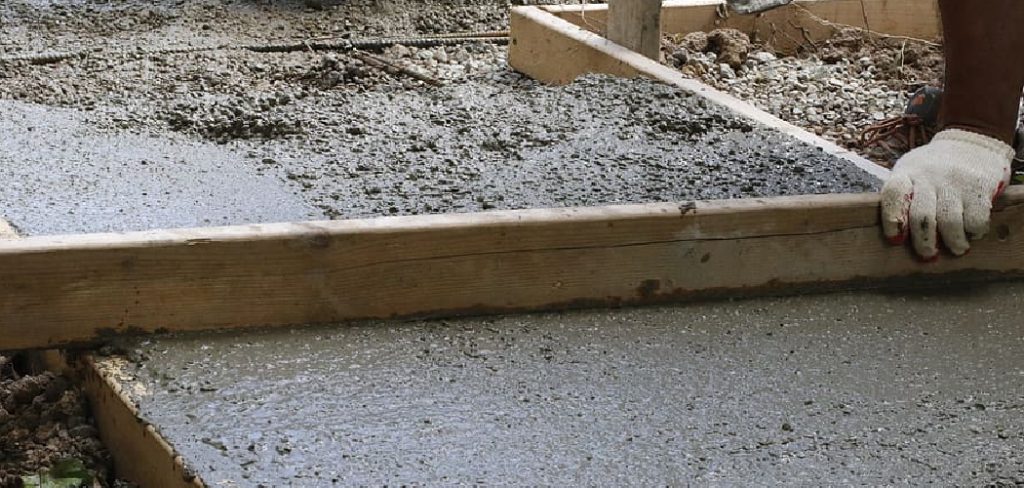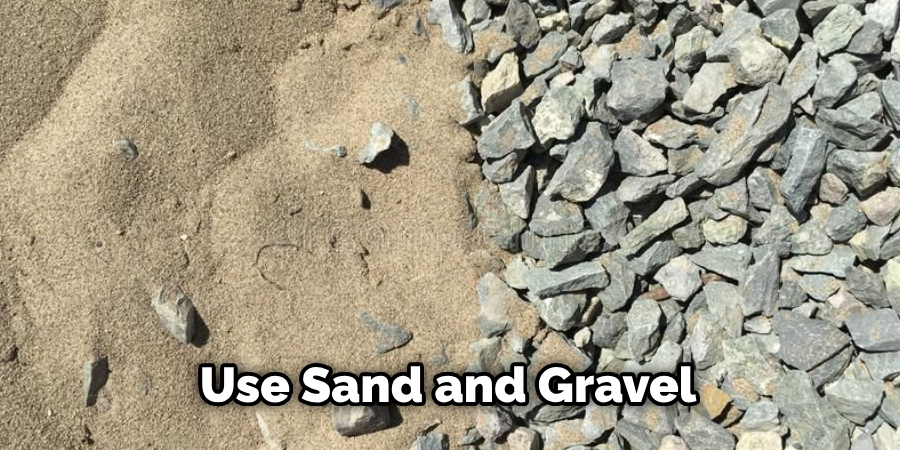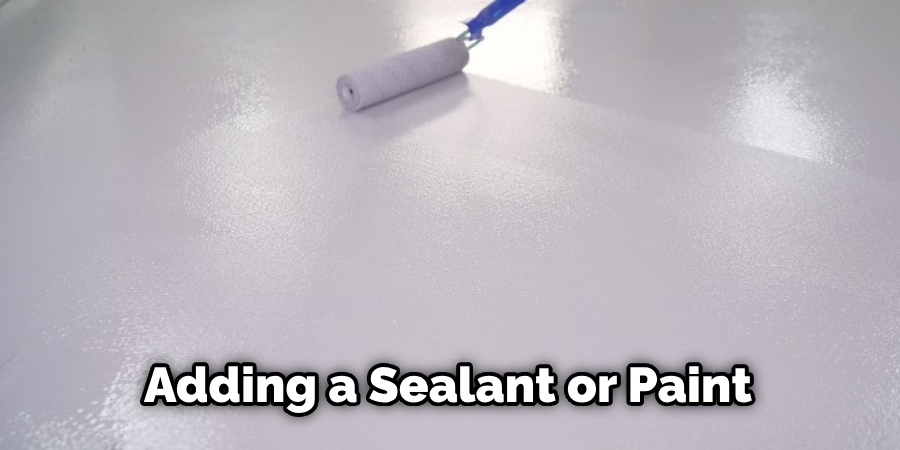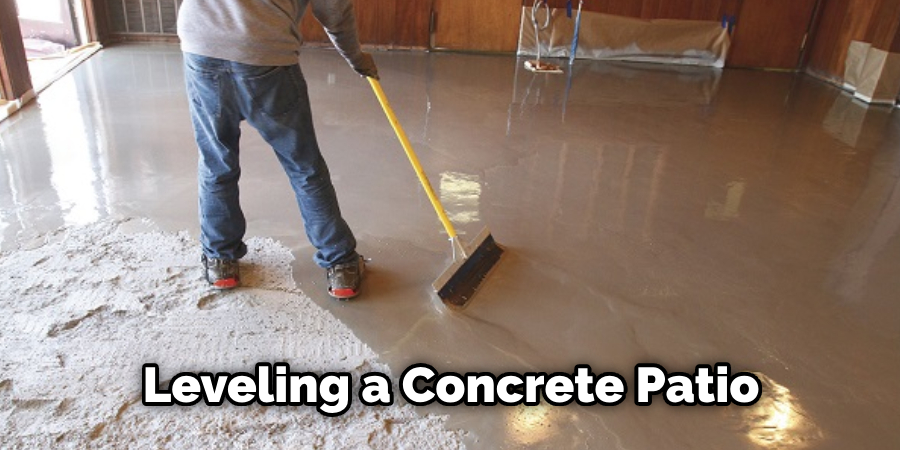Sloping concrete patios can be dangerous and unattractive. If the slope is too steep, it can create a tripping hazard or make the patio difficult to use. If it’s not properly sloped away from your house, you may find that water pools on your patio after rain or snow storms, leading to potentially hazardous ice when temperatures drop. Fixing the slope of your patio is essential to ensure it’s safe and attractive for you and your guests to use.

The advantages of how to fix a concrete patio slope are numerous. For starters, it allows you to level out an uneven area easily. This makes the outdoor space much more user-friendly since no one will be tripping over undulating surfaces.
It also increases curb appeal since potential buyers will be attracted to a nicely maintained property with even surfaces. In this blog post, You will learn in detail how to fix concrete patio slope.
Step by Step Processes for How to Fix Concrete Patio Slope
Step 1: Inspect the Patio
Before fixing the concrete patio slope, inspecting the area for any existing damage or irregularities is important. This will help you identify the cause of the problem and decide what needs to be done. If there are any existing bumps or humps on the patio surface, they must be removed first to create a level base. This can be done with a sledgehammer and chisel or by using a mortar remover.
Step 2: Fill Low Spots

If there are any low spots on the patio surface, they must be filled up first. Use sand and gravel to do this. Make sure that the area is level before proceeding to the next step. Determine the correct slope for your patio and then lay down a layer of sand or gravel on top of the leveled surface. This will help create an even gradient across the area.
Step 3: Pour Concrete into Place
Use chisels and other tools to create a consistent slope on the concrete. Ensure the edges are even and all debris is removed from the area before pouring the concrete into place. After pouring the concrete, use a compactor to flatten out any uneven areas. This will ensure that there is an even gradient across the entire patio surface.
Step 4: Add Finishing Touches
Once the concrete has been leveled and compacted, it can then be finished according to your specifications. This can include adding a sealant or paint to protect the concrete from weathering and staining. Measure out the correct proportions of cement and sand, then mix them together with water until a thick mortar consistency is achieved.

Step 5: Fill Cracks and Holes
Use the cement mortar to fill up any cracks or holes on the concrete patio surface. This will help create an even and smooth finish before proceeding to the next step. Once all of the cracks and holes have been filled, use a trowel to smooth out any rough edges on the concrete patio surface. Ensure all debris is cleared before painting or sealing the finished product.
Once these steps are followed, you should have a perfectly flat and level concrete patio that will last many years. With some patience and the right tools, you can effectively fix any slope on your concrete patio.
Tips for How to Fix Concrete Patio Slope
- Wear protective clothing such as a long-sleeved shirt, gloves, and safety glasses.
- Ensure you have the right tools for the job – e.g., shovels, trowels, levelers/straight edges, etc.
- Know the area where you are working to ensure safety better. Be sure to pay attention to the surrounding landscape and any potential hazards nearby, such as trees, roots, or other obstacles.
- Wear a dust mask while working with concrete due to its dangerous dust particles.
- Make sure you have plenty of water on hand for mixing concrete or cleaning up spills; this will help reduce the risk of skin and eye irritation.
- Provide enough support to the concrete for it to remain stable throughout the project. This includes using stakes, shoring, etc., as needed.
With a little extra care and attention, you can enjoy a beautiful, level patio for years to come.

What Are the Primary Causes of a Sloping Concrete Patio?
The primary causes of a sloping concrete patio are ground movement due to erosion, improper placement when the patio was initially poured, or tree roots growing underneath and pushing up on the slab. Any one of these issues can cause a concrete patio to become uneven.
Fortunately, there are ways to address each issue and restore your patio to a level, even surface. The first step is to identify the cause of the sloping to determine the right solution.
Erosion is one of the most common causes of a sloping concrete patio. It can be caused by water runoff from rain or melting snow, wind, and gravity. When erosion occurs, the ground beneath the concrete patio shifts and causes the slab to become unlevel. The best way to fix a patio that has shifted due to erosion is by installing steel plates, rebar, or other reinforcing materials underneath the slab to stabilize it.
Are There Any Safety Concerns You Should Be Aware of Before Tackling a Project Like This?
Yes, there are some safety concerns to be aware of before attempting to fix a sloped concrete patio. For starters, make sure that you wear the proper safety gear, such as gloves and safety goggles, when working with concrete. Additionally, be extremely careful not to damage any underlying structures or pipes while you are making repairs. Ensure that your tools and supplies are in good working order and that you have the right tools for the job. If necessary, consult a professional to ensure that your project is completed safely and correctly.
In addition, it is important to know any weather conditions before working on your patio slope. Ensure there is no water or standing puddles, which can weaken the concrete and cause further damage. Wait until after a rain shower has passed before beginning work. It is also important to note that the ground may be wetter in some areas if you’re working on a slope.
What Are the Benefits of Leveling a Concrete Patio Versus Leaving It as-is?
Leveling a concrete patio can provide several benefits. First, it eliminates the potential for water to pool on the surface due to the slope. This is important as standing water can cause damage to the concrete over time.
By leveling out the patio, you create a flat surface that drains water away more efficiently. Another benefit of leveling a concrete patio is that it makes it easier to install furniture and décor. Keeping the surface level will ensure that these items remain stable and in place, which improves safety and stability.
Finally, leveling a concrete patio can improve its overall aesthetics. A flat, even surface creates a more attractive outdoor space for you and your guests. This can greatly improve the patio’s overall look, making it a more inviting area for people to gather.
Overall, leveling a concrete patio offers several advantages over leaving it as-is. While this can be done with different techniques, each option will significantly improve the stability and aesthetics of your outdoor space.

What Potential Problems Can Arise From Not Properly Fixing a Sloping Concrete Patio?
Several issues can arise if a concrete patio is not properly fixed for its slope. One of the most prevalent concerns is that water runoff will cause the concrete to erode over time. This erosion can create an even steeper slope, resulting in puddling rain or snowmelt in certain patio areas and making it difficult to use. In addition, water can collect near the foundation of your house and seep into the basement or crawlspace, potentially causing flooding and other structural damage.
If a person tries to walk up or down a steeply sloping concrete patio, there’s also an increased risk of falling and injury. Therefore, it is important to properly address a sloping concrete patio to ensure it is safe and usable.
Fortunately, there are several options for fixing the slope of a concrete patio. The key is to determine which method will be best suited for your situation based on factors such as cost, time commitments, and desired results. The more drastic methods require professional assistance, while the simpler options can usually be completed DIY-style.
How Long Will It Take to Complete a Project Like This?
The amount of time it takes to complete a project like this will vary depending on the size and complexity of your patio. Generally speaking, you can expect between 1-3 days for most concrete patio slope repair projects. This timeline includes measuring the area, prepping the surface, mixing the product, pouring it into place, and troweling to finish. Additional time and considerations should be considered if you are replacing an existing patio.
This could include demolition of the existing patio, soil preparation before laying down new concrete, hauling away old materials/debris, etc. All of which will add to the overall turnaround time for completing a project like this. It is important to remember that the longevity of your project will depend greatly on how well it was executed. Be sure to take all necessary steps when completing a project like this to ensure you have a solid and lasting result.
Conclusion
In conclusion, fixing a concrete patio slope can be done in several different ways depending on the severity of the situation. If the slope is minor and gradual, you can use self-leveling concrete to even it out. If the patio has steeper angles or steps, you may need to use some form of masonry repair material like mortar or concrete caulk.
If the slope is due to an underlying problem like a cracked foundation, you need to address that issue first before attempting any repairs. I hope reading this post has helped you learn how to fix concrete patio slope. Make sure the safety precautions are carried out in the order listed.
